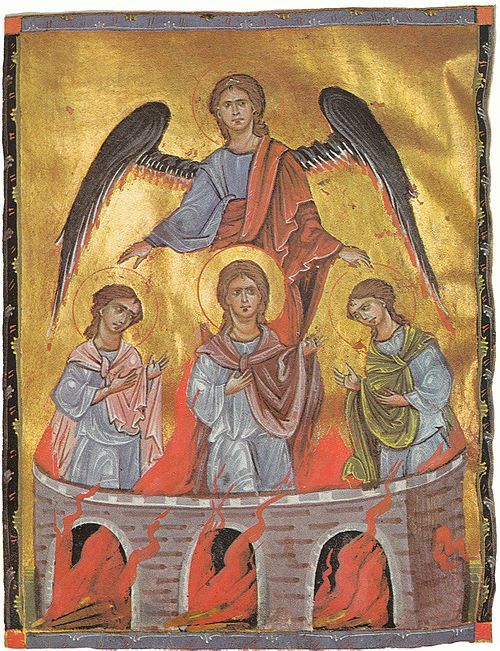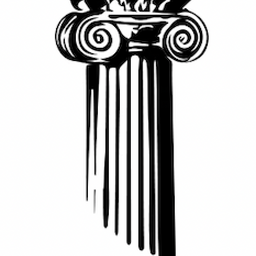- Feb 5, 2002
- 166,683
- 56,301
- Country
- United States
- Faith
- Catholic
- Marital Status
- Married
- Politics
- US-Others
Hey everybody,
Today is Tuesday in the third week of Lent, and you’re reading The Tuesday Pillar Post.
If you went to Mass today, or read the readings, you know that today’s Old Testament reading is a prayer of Azariah, also known as Abednego, who along with his friends Shadrach and Meshach was bound by ropes and thrown by King Nebuchadnezzar into a “fiery furnace,” because they refused to bow to an image of the king.
The men survived the fire unscathed. The book of Daniel says that “they walked about in the flames, singing to God and blessing the Lord!” And indeed, Nebuchadnezzar saw in the fire a fourth man, regarded by many Christians as a prophetic prefigurement of Christ the Lord.
The Scripture today includes these words of Azariah:
“For your name's sake, O Lord, do not deliver us up forever,
or make void your covenant.
Do not take away your mercy from us,
for the sake of Abraham, your beloved,
Isaac your servant, and Israel your holy one,
To whom you promised to multiply their offspring
like the stars of heaven,
or the sand on the shore of the sea.”
…
“So let our sacrifice be in your presence today
as we follow you unreservedly;
for those who trust in you cannot be put to shame.
And now we follow you with our whole heart,
we fear you and we pray to you.
Do not let us be put to shame,
but deal with us in your kindness and great mercy.
Deliver us by your wonders,
and bring glory to your name, O Lord.”
I don’t have any especially compelling insight into Azariah’s prayer, but I did learn something interesting yesterday.
At least some scholars think that the “fiery furnace” into which the men were thrown was Baba Gurgur, a naturally occurring crater of flame outside the modern-day Iraqi city of Kirkuk.
There have been fires burning continuously at Baba Gurgur for thousands of years, as natural gas seeps up through cracks in the rocks below ground, which sit above a large oil field.
In some centuries the fires have been larger, in some centuries smaller, depending on the situation of the rock below.
Continued below.

Today is Tuesday in the third week of Lent, and you’re reading The Tuesday Pillar Post.
If you went to Mass today, or read the readings, you know that today’s Old Testament reading is a prayer of Azariah, also known as Abednego, who along with his friends Shadrach and Meshach was bound by ropes and thrown by King Nebuchadnezzar into a “fiery furnace,” because they refused to bow to an image of the king.
The men survived the fire unscathed. The book of Daniel says that “they walked about in the flames, singing to God and blessing the Lord!” And indeed, Nebuchadnezzar saw in the fire a fourth man, regarded by many Christians as a prophetic prefigurement of Christ the Lord.
The Scripture today includes these words of Azariah:
“For your name's sake, O Lord, do not deliver us up forever,
or make void your covenant.
Do not take away your mercy from us,
for the sake of Abraham, your beloved,
Isaac your servant, and Israel your holy one,
To whom you promised to multiply their offspring
like the stars of heaven,
or the sand on the shore of the sea.”
…
“So let our sacrifice be in your presence today
as we follow you unreservedly;
for those who trust in you cannot be put to shame.
And now we follow you with our whole heart,
we fear you and we pray to you.
Do not let us be put to shame,
but deal with us in your kindness and great mercy.
Deliver us by your wonders,
and bring glory to your name, O Lord.”
I don’t have any especially compelling insight into Azariah’s prayer, but I did learn something interesting yesterday.
At least some scholars think that the “fiery furnace” into which the men were thrown was Baba Gurgur, a naturally occurring crater of flame outside the modern-day Iraqi city of Kirkuk.
There have been fires burning continuously at Baba Gurgur for thousands of years, as natural gas seeps up through cracks in the rocks below ground, which sit above a large oil field.
In some centuries the fires have been larger, in some centuries smaller, depending on the situation of the rock below.
Continued below.


